How to Become a Digital Nomad: Real-Life Insights from Full-Time Travelers
Curious about becoming a digital nomad? Discover the real-life journey, challenges, and rewards of embracing a location-independent lifestyle while traveling full-time with family.
DIGITAL NOMADTRAVEL
Meghan Gunseor
6/23/20255 min read
This post may contain affiliate links. As an Amazon Associate I earn from qualifying purchases. I may receive a small commission when you make a purchase using my link.
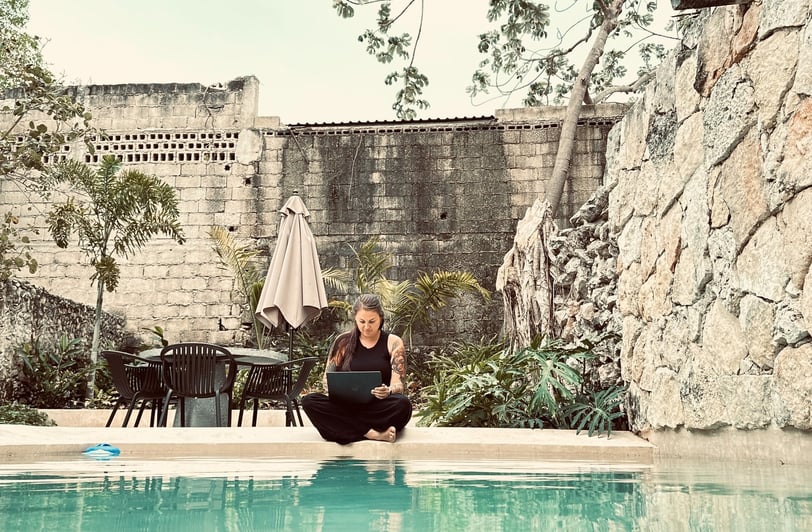

What Does It Really Take to Become a Digital Nomad? Is It Worth the Leap?
In a world where “work from home” is no longer a novelty and wanderlust is reaching fever pitch, more people are asking: What does it actually take to become a digital nomad, and is it really worth the leap?
The answer is more layered than social media and YouTube might suggest. Behind every tropical workspace and breathtaking view is a story of change, growth, challenge, and intentional decision-making. This blog dives deep into the real-life experience of our digital nomad family who traded our nine-to-five corporate life for full-time travel and a location-independent lifestyle. From the first step that started it all to the systems that keep it going, here’s what it’s actually like to live and work on the road.
At some point, many of us get that restless feeling: the creeping suspicion that our current life doesn’t quite fit. It feels like there has to be more. More than this. For us, the moment came wrapped in health issues, need for flexibility, and a spontaneous pull for change before we even knew what a “digital nomad” was.
The idea of full-time travel started years earlier with a goal to live abroad. The idea lingered in the background while life began to pass us by. Finally it became impossible to ignore. What we discovered is that the first step toward location independence often starts with a nudge from real life. It is just about taking the bull by the horns and going all in.
That nudge became a shove when health made traditional work impossible. The solution? Asynchronous work, a term I had never heard of and couldn't fathom that such work existed. With a doctor’s advice to find a career that allowed for flexible hours and the ability to adapt to unpredictable days, I dove headfirst into remote work. I paid a mentor to learn about industries, I took temp jobs, I put in more hours than I was being paid for, and I went above and beyond what was asked. Within four months, I made more than my previous salary and I began making more than $100,000 a year, with the freedom to work from anywhere.
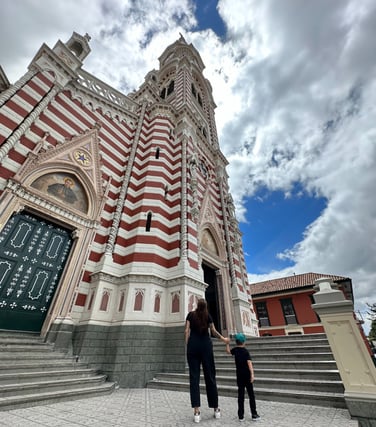

But making the leap to full-time travel takes more than just income. It takes the crazy step of leaving it all behind. My husband and I are full send kind of people. So we sold everything we owned, sold the house and cars, and left nothing behind. Day 1 was probably the most freeing feeling I ever had. My time belonged to noone and this was the start of something new.
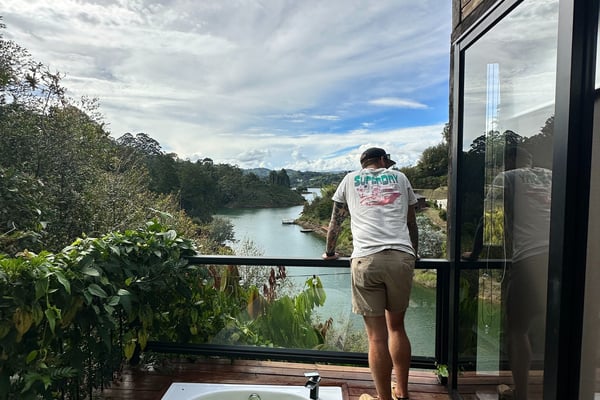

When we first started traveling we tried all different options, overlanding, airstreaming, road tripping, backpacking, hostels, B&Bs, Hotels, airbnbs, plane, ferry, tuktuk, bus. And honestly we loved every single one in its own way. But one thing we loved for sure was slow travel by land or sea.
Slow travel opened the door to a chaos free (we are nomads there is always a little chaos.) work life balance we love with being immersed in a culture. Because of this a typical day on the road is Surprisingly structured. From Japan to Colombia, we have built a consistent rhythm, balancing time zones with early wake-ups, fitting in workouts during morning calls, and working through the early hours so that the rest of the day is free for exploring. Meals are a blend of local favorites and simple at-home staples, and bedtime comes early to make room for a 1 a.m. start on Pacific Time. It’s not glamorous, it’s intentional. Every decision is made to maximize both productivity and presence.
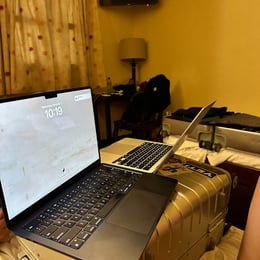
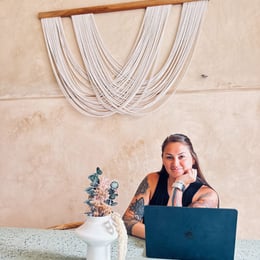
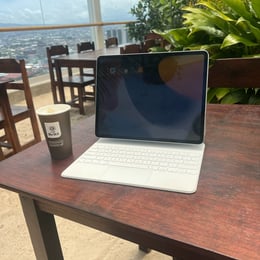
Of course, none of it works without systems. Tools like Google Suite, ClickUp, and budget-tracking spreadsheets keep their business and personal life on track. Local apps for saving money and are our go-to for transportation, food delivery, and navigating cities. And perhaps the most underrated tool of all? Flexibility. The kind that allows you to reroute when Wi-Fi fails or rebook when your Airbnb doesn’t live up to the photos.
Challenges do come, and they’re not always the ones you expect. Unreliable internet is more than a nuisance, it’s a dealbreaker when your livelihood depends on it. Emotionally, the transition can be jarring, especially when your reality no longer matches your friends’ back home. But the payoff is huge: deeper family connections, powerful new friendships with fellow nomads, and the thrill of seeing your child learn through real-world experiences.
Money, too, plays a major role. Living debt-free has been transformative for our family. In contrast to the debt-fueled model so common in the U.S., we embraced a mindset of minimalism and intentional spending. Slow travel, staying in one place for weeks at a time, not only saves money but reduces burnout. Our monthly budget is realistic, flexible, and carefully tracked. When we underspend in one location, we roll that savings into the next. It’s a strategy that makes long-term travel financially sustainable.
When it comes to choosing the next destination, our family only travels by land and sea, creating a unique rhythm guided by geography, border policies, internet availability, and affordability.Of course we incorporate bucket list spots, but only when they fit the route and the budget. And we don’t book months in advance, flexibility is key. We often stay in a city for a few days to feel it out before committing to a longer stay.
Despite the sacrifices and logistical puzzles, the digital nomad lifestyle has only deepened our relationships, both within our family and with others on the road. Being constantly together has brought tus closer, and remote work gives space for both personal fulfillment and quality time. While relationships back home have changed, the bonds we form with fellow nomads are strong and surprisingly low-maintenance, built on shared values and mutual respect.
If you’re dreaming of this lifestyle, the best advice? Start small. Don’t overplan. Book a month somewhere with good internet, build in buffer time for unexpected hiccups, and treat every travel day like a puzzle to solve, not a problem to dread. Know that not everything will go as planned, but also that every delay, detour, and misstep can turn into a story worth telling.
So, is the digital nomad lifestyle for you?
Only one way to find out.
For our family, the journey was never about escaping, it was about redefining freedom. With careful planning, a flexible mindset, and the right tools, we turned a desire for change into a thriving life on the road. We’re not slowing down anytime soon. And maybe, just maybe, your first step is closer than you think.
The world is waiting. All that’s left is for you to go.
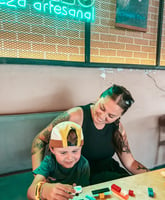

Hi! I'm


